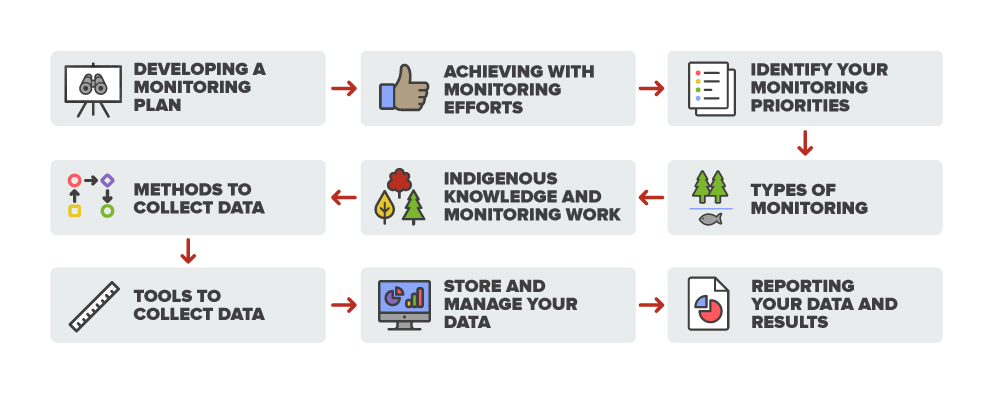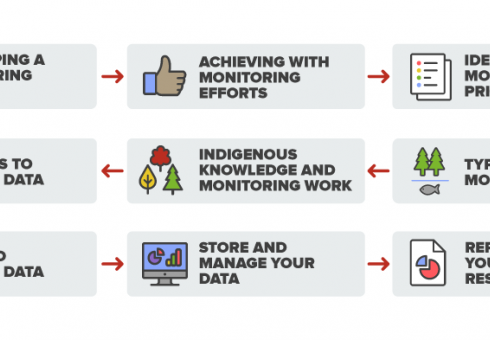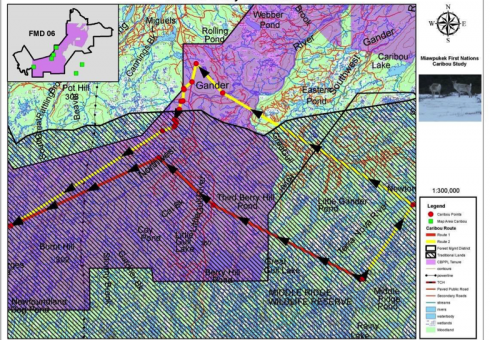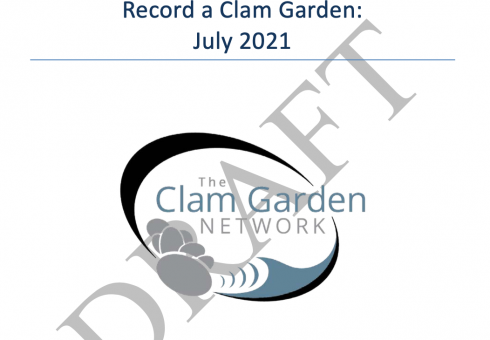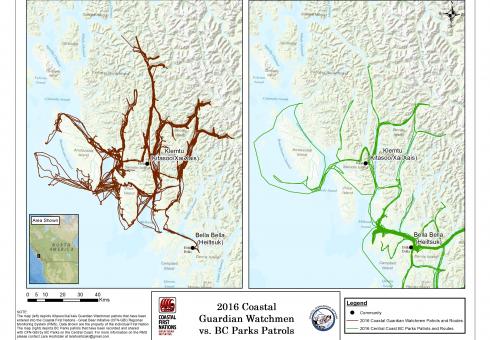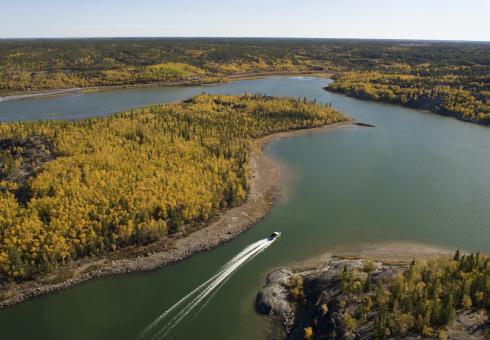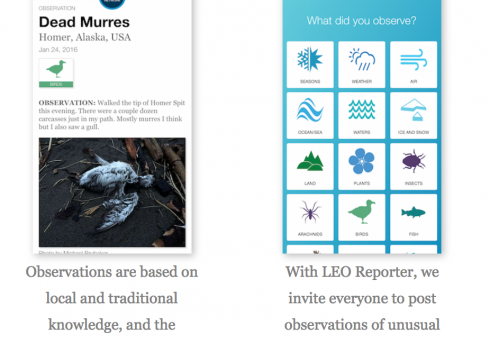Tips for Monitoring and Data Management
- Outline clear monitoring goals and priorities to guide your monitoring activities and efforts.
- Ensure the community drives the development of monitoring goals and priorities. Report monitoring activities and findings to the community in a meaningful way.
- Use both Indigenous and scientific knowledge to inform your monitoring program design.
- Know how you will use your data and what questions it can and can’t answer. Try not to collect data for data’s sake.
- Early on, consider how data will be managed, stored and analyzed. Without good systems in place, it will be difficult to make use of the information you collect.
- Identify and develop monitoring partnerships in your region or around key issues of concern to amplify the impact of your monitoring efforts and capture efficiencies that come from working together.
- Ensure adequate training and ongoing technical support for staff conducting monitoring work. Spend time in the field and office observing how guardians collect data, document observations, and input information into the data management system to ensure high quality data.
- Match the right staff to the right monitoring work. Not everyone will have the right personality for monitoring compliance of rules and regulations or community use policies.
- Regularly look at and report out on your data. This may help catch errors and spot trends.
- Assign clear responsibility to staff re: receiving, inputting, analyzing and reporting on the data. Translate this information into maps, graphs, and compelling images whenever possible.
- Provide opportunities for staff to present highlights of their monitoring and data collection efforts on a regular basis to managers, decision-makers, elected leaders, hereditary leaders, community members, etc.
- Regularly review and adapt the monitoring plan and data management system as needed.
